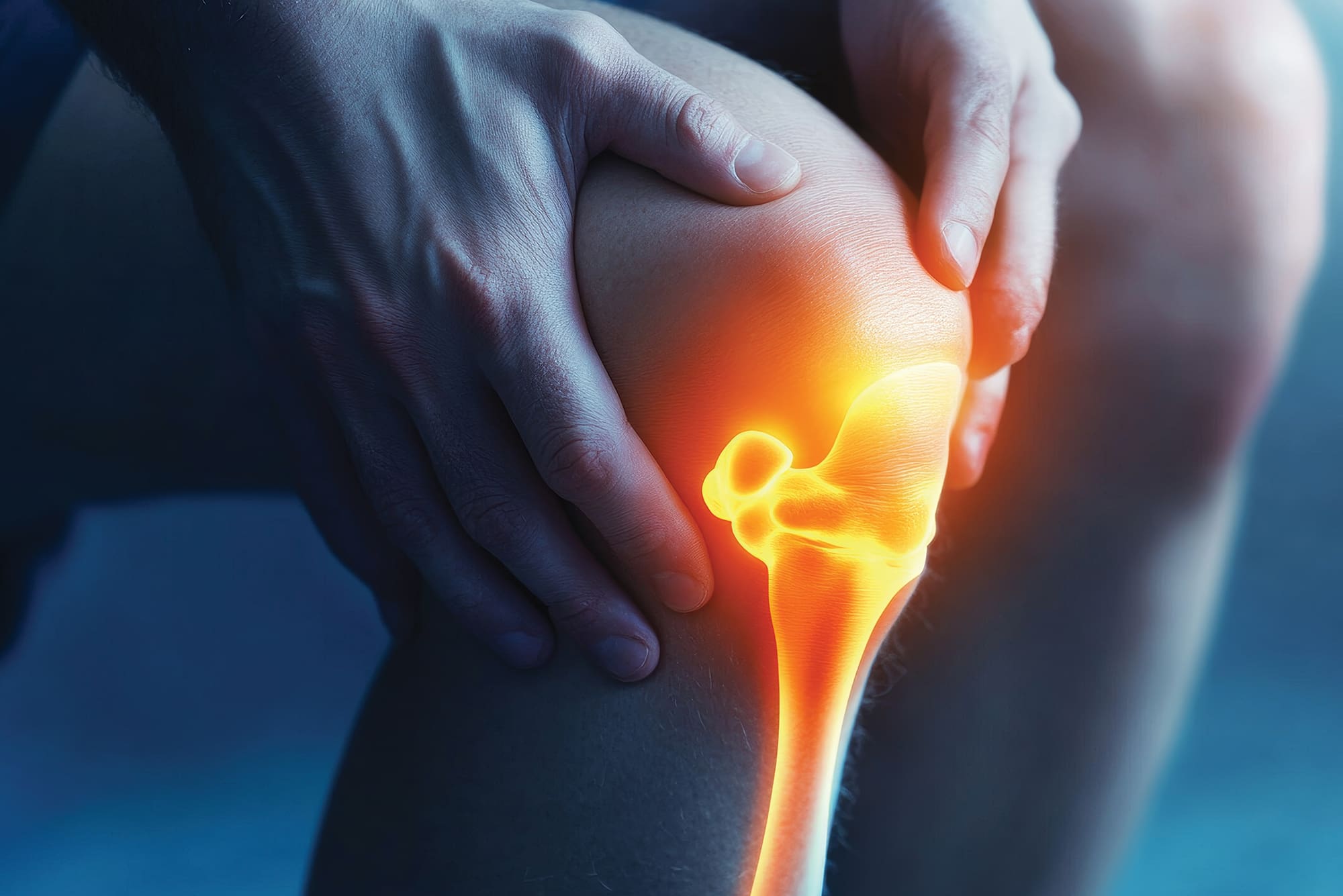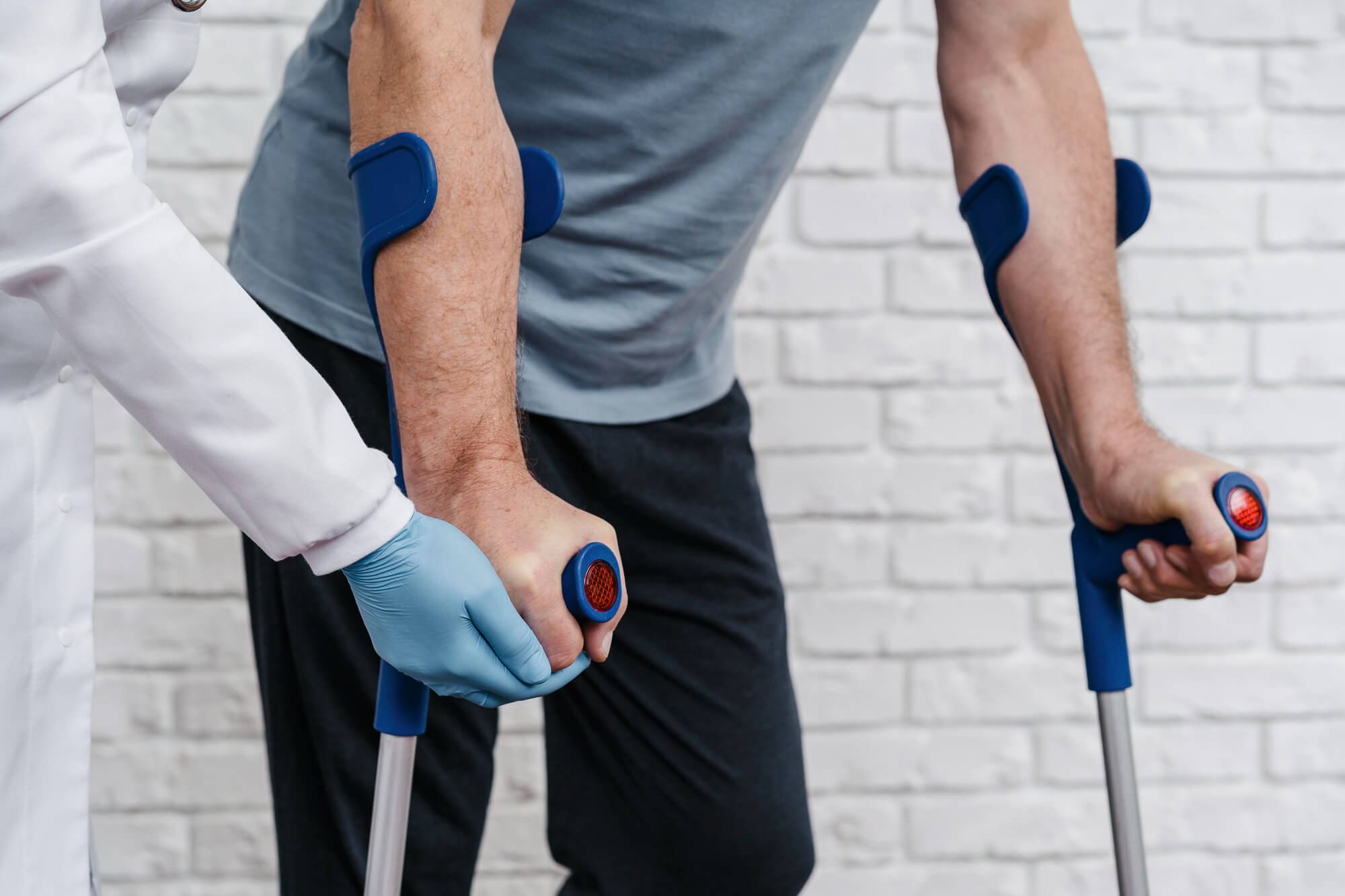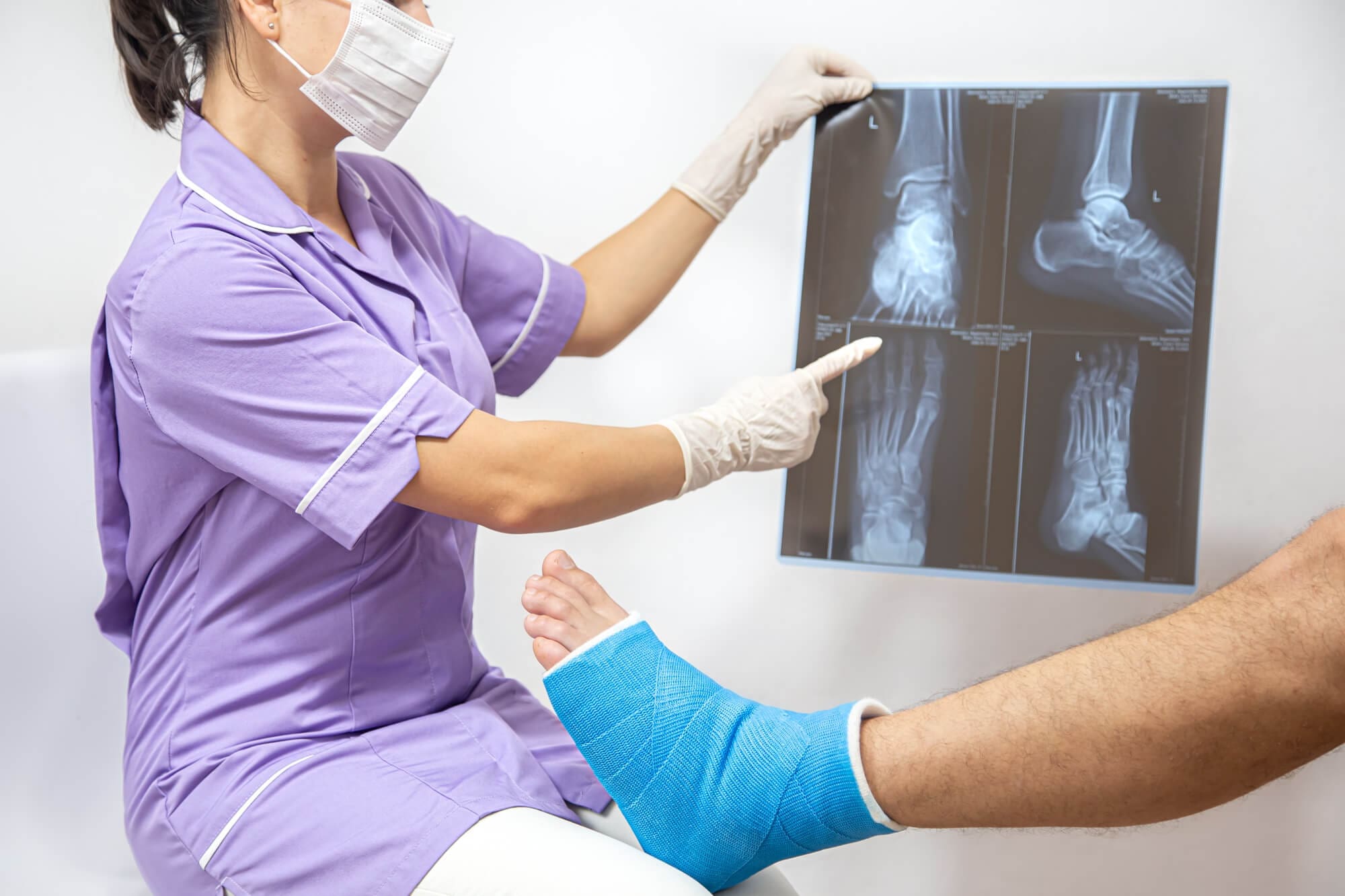
Chronic hip pain can make everyday movements—such as walking, standing, and climbing stairs—difficult. If hip pain affects your quality of life and conservative treatments no longer provide relief, hip replacement surgery may be the best solution.
At Burlingame Orthopedics, our board-certified, fellowship-trained orthopedic surgeons specialize in hip replacement procedures, offering advanced surgical approaches that restore mobility and reduce discomfort.
Our team performs hip replacement surgery at multiple locations throughout the Peninsula and San Francisco. We offer hip replacement surgery in both hospital settings and ambulatory surgery centers (ASC) for patient convenience.
For inquiries, call (650) 692-1475 or request an appointment online.
Understanding Hip Replacement Surgery
The hip is a ball-and-socket joint that connects the femur to the pelvis. The femoral head fits into the hip socket allowing for smooth movement. Soft tissues, including cartilage and ligaments, cushion and stabilize the joint.
However, hip joints can deteriorate due to rheumatoid arthritis, osteoarthritis, avascular necrosis, or injury. When joint damage causes persistent pain and stiffness, a hip implant can replace the damaged parts and restore function.
This surgical procedure is a common treatment for individuals who have exhausted non-surgical treatment options and continue to experience chronic hip pain that limits daily activities.
Who Is a Candidate for Hip Replacement Surgery?
You may be a candidate for hip replacement surgery if you experience:
- Severe hip pain that limits mobility and daily activities
- Pain that persists despite invasive approaches like injections or therapy
- Rheumatoid arthritis, osteoarthritis, or avascular necrosis
- Hip fractures or degenerative joint disease
- Difficulty walking, standing, or climbing stairs
- Failed previous hip surgery requiring revision surgery
Types of Hip Replacement Procedures
At Burlingame Orthopedics, we offer multiple hip replacement procedures, tailored to each patient’s needs.
We have specialized training and are able to perform anterior hip replacements. Hip replacements can be approached from the front (anterior) and back (posterior). Both approaches are excellent options, but certain patients can have a faster and easier recovery with an anterior approach.
Total Hip Replacement
A total hip replacement is the most common type of hip replacement procedure. It involves replacing both the femoral head and the hip socket with an artificial joint to restore function and relieve pain.
Hip Replacement Implant Components
A hip replacement implant consists of four main components, each designed to restore joint function, provide smooth movement, and ensure long-term stability.
- Cup (Acetabular Shell): The outer part of the implant that replaces the hip socket, providing a strong and smooth foundation for movement.
- Liner: Fits inside the cup and serves as a smooth surface for the head to move against, reducing friction and wear.
- Head (Femoral Head): The ball that replaces the natural femoral head, allowing for fluid movement within the joint.
- Femoral Stem: Inserted into the thigh bone to anchor the implant, ensuring stability and proper joint function.
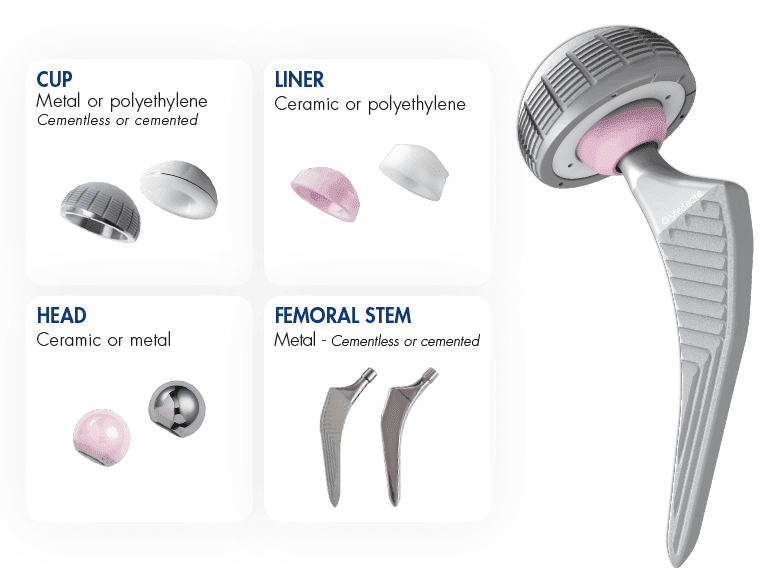
There are two primary material combinations used in hip replacement surgery, each with distinct advantages:
- Metal-on-Polyethylene: The femoral head is made of metal, while the hip socket liner is a highly durable polyethylene plastic.
- Ceramic-on-Ceramic: In this option, both the femoral head and hip socket liner are made of ceramic.
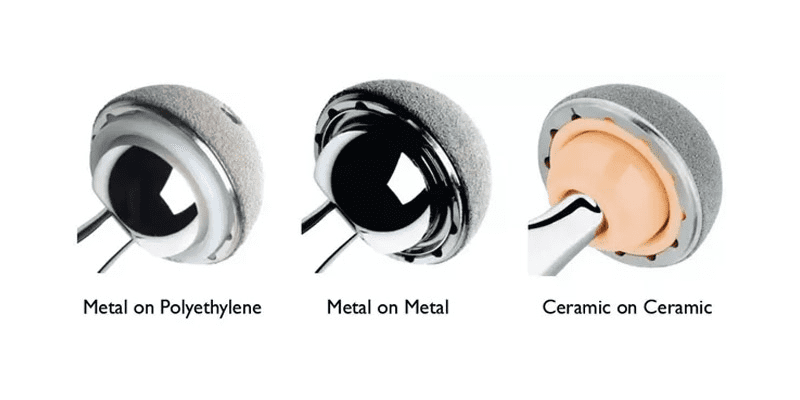
Partial Hip Replacement
A partial hip replacement, also known as hemiarthroplasty, involves replacing only the damaged femoral head while preserving the natural hip socket. This procedure is often recommended for patients with specific fractures or conditions affecting only one part of the joint.
Hip Revision Surgery
For patients who have complications from a prior hip replacement procedure, a revision surgery corrects the issue by replacing worn-out or malfunctioning components.
What to Expect During Surgery
Before surgery, you will receive preoperative instructions, such as avoiding blood thinners and certain foods.
The procedure is performed under general anesthesia or with local anesthesia in the spine (you are awake but don’t feel anything).
During the 1-2 hour procedure:
- The surgeon makes an incision over the hip joint from the front, back, or side, depending on the chosen surgical approach and patient anatomy.
- The damaged femoral head is carefully removed, while the hip socket may be reshaped to accommodate the new implant.
- The femoral stem is inserted into the thigh bone to provide stability, and the head component is attached to restore the ball-and-socket function.
- A liner is placed inside the cup (acetabular shell) to allow smooth articulation.
- Bone cements may be used to secure the implant in place, or a press-fit technique may be used to encourage natural bone growth around the implant.
- The incision is closed, and a sterile dressing is applied to protect the surgical site.
Patients are monitored in recovery before being discharged, often on the same day of surgery with no need to stay overnight in the hospital!
Recovery and Rehabilitation
Recovery time varies based on surgical approach, overall health, and adherence to rehabilitation.
First Few Days After Surgery
- The leg will be supported to prevent stress on the hip implant.
- Pain medication and blood thinners are prescribed.
- Movement is encouraged to prevent blood clots.
Weeks After Surgery
- Muscle strength improves with guided physical therapy.
- Walking assistance devices may be needed initially.
- Most patients can resume daily activities within 6-12 weeks after surgery.
Long-Term Recovery
- Full recovery can take months after surgery.
- Patients often regain normal mobility and enjoy improved quality of life.
Recovery Timeline
| Recovery Phase | Timeframe | What to Expect |
| Immediate Post-Surgery | First 24 hours | Pain management begins; walking may be assisted. |
| Early Recovery | Days after surgery (1-7 days) | Light movements encouraged; risk of blood clots reduced. |
| Weeks After Surgery | 2-6 weeks | 2-6 weeksMuscle strength improves; increased mobility. |
| Mid-Term Recovery | 6-12 weeks | Physical therapy helps restore mobility and strength during recovery. |
| Long-Term Recovery | 3-6 months | Most activities resume; continued strengthening. |
| Full Recovery | 6-12 months | Maximum improvement in function. |
Why Choose Burlingame Orthopedics?
Our board-certified orthopedic surgeons have extensive expertise in hip replacement procedures, offering comprehensive care to ensure the best outcomes.
- Comprehensive Treatment Approach: We provide a full range of care, from nonsurgical treatments to advanced hip replacement surgery, ensuring the best approach for each patient.
- Convenient and Accessible Care: With same-day and next-day appointments, we offer timely evaluations and consultations to address your concerns quickly.
- On-Site Imaging for Faster Diagnosis: Our immediate X-ray and diagnostic services allow for efficient assessment and personalized treatment planning.
- Customized Recovery Plans: Each patient receives an individualized rehabilitation program that includes physical therapy and targeted exercises to restore mobility and strength.
Our highly skilled team includes:
Our collaborative team ensures that every patient benefits from the highest standard of care, whether through conservative treatments or advanced surgical solutions.
Schedule Your Appointment
Take the next step toward relieving shoulder pain and restoring mobility. Contact Burlingame Orthopedics to schedule a consultation and discuss whether knee replacement surgery is right for you.
To book an appointment at our orthopedic and sports medicine clinic in Burlingame, CA, call (650) 692-1475 or request an appointment online.
Conveniently Located for Easy Access
- Across the street from Mills Peninsula Hospital
- Private parking lot for hassle-free visits
- Easily accessible by Caltrain and local bus routes
FAQs About Hip Replacement Surgery
How long does it take to recover from a hip replacement?
Recovery varies by patient, but most people can return to light activities within 6-12 weeks. Full recovery, including regaining strength and mobility, can take 3-6 months. Some patients may continue to see improvements up to a year after surgery.
Are there things you can never do again after a hip replacement?
While modern hip replacements are highly durable, certain high-impact activities like running or contact sports may not be recommended. Patients are advised to avoid extreme twisting motions and high-impact movements that could stress the artificial joint.
How painful is a hip replacement?
Pain levels vary, but most patients experience the most discomfort in the first few days after surgery. Pain is managed with medication, and discomfort gradually decreases as healing progresses. Many patients report significant pain relief compared to their pre-surgery condition.
How long after hip replacement can I walk unaided?
Most patients begin walking with assistance the day after surgery. Depending on individual progress, some can walk without a cane or walker within 2-6 weeks, but full independence typically takes a few months.

